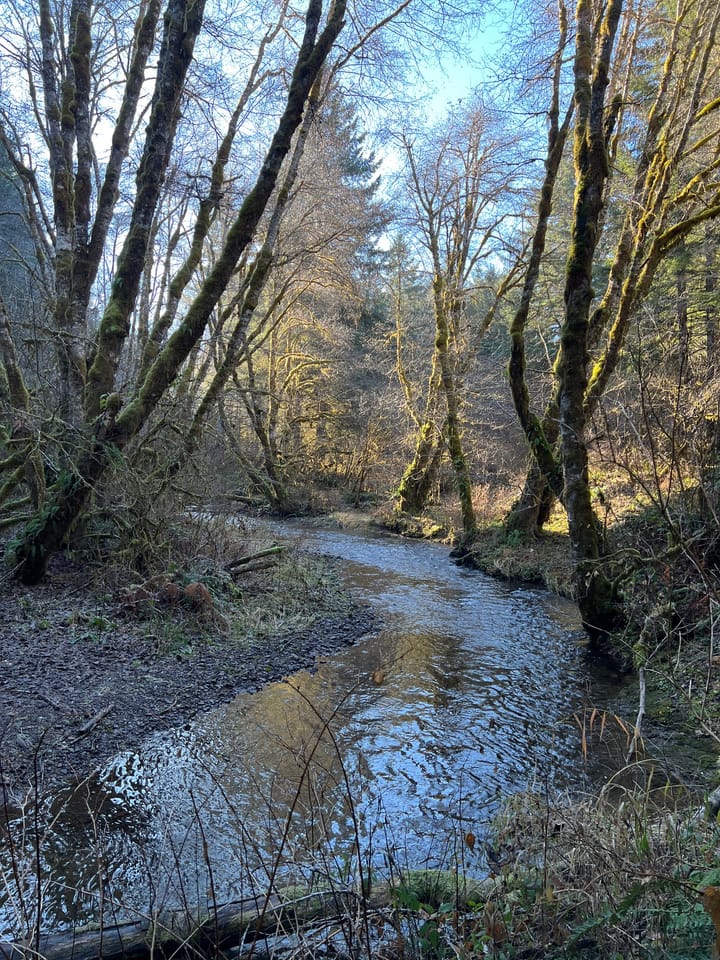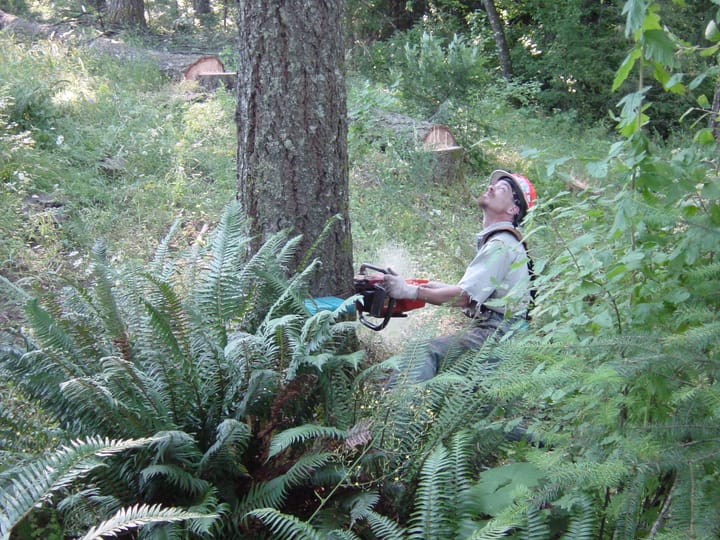The Time Has Come -

To harness the untapped power of wood markets to improve forestry we must be more strategic -
Many of us have worked together for over twenty-five years toward the shared goal of developing wood markets that lead to creating reliable, meaningful economic incentives (MEI) for better forestry in western Oregon and Washington. In recent months, the lessons I have learned from this work have come into sharper focus. While acknowledging that all involved have their own unique and valuable perspectives on this work and, while being clear that I don’t pretend to possess any wisdom nor insights on the topic, it does feel constructive to share my conclusions. With the increased interest in contributing to solutions to larger societal problems through the rise of ecological and climate smart(er) forestry, the shift toward designers and builders becoming more thoughtful and discerning consumers of wood, and increased public investment in these innovations, it is timely to take stock of where we are, where we have come, what we’ve learned, where we aim to go and how we aim to get there. Accordingly, I feel that the time has come to take the following five steps:
Step One - It is important to be honest with ourselves about whether progress has been made toward the goal of using wood markets to create reliable, meaningful economic incentives for better forestry in our region. It is my assessment that we have not. Yes, hard, thoughtful work has been done, inspiring and rewarding projects have been completed, successful businesses along the wood chain have been created, important, non-profits have been founded and have increased their capacity and relationships, economic activity has been generated, and valuable lessons have been learned, but these successes should not be confused with progress toward meaningful economic incentives.
Step Two – Given this, it is time for all of us involved to ask ourselves whether we want to continue pursuing MEI as a pathway to change in western Oregon and Washington. If the answer is “yes”, we need to reaffirm that commitment and be clear about how strong our commitment is. Success depends on strong and clear commitment by all necessary partners. Greater clarity is needed on whether the aim is to use incentives to change how forestry is practiced, to reward those already practicing high quality forestry, or both?
Step Three – Having reaffirmed the commitment, we must agree and acknowledge that success in creating MEI depends on our success in consistently linking a number of essential ingredients. This is not unlike acknowledging that success in kindling a fire depends on having the essential ingredients – fuel, air, ignition and the ability to successfully combine them. Just as it is foolish to busily collect firewood if one doesn’t have a way to light it, it is a waste of time to aspire to creating MEI without identifying the necessary ingredients are and having a way to reliably get and combine them.
Step Four - Building on this agreement that success depends on assembling all – and not just some – of the essential ingredients, the next logical step is considering and agreeing on what those crucial ingredients are. Though identifying the essential ingredients should be a group project, drawing on the insights and experience of all of the partners, I will prime the pump by suggesting the following five, essential ingredients:
1) Within the region, we must have a minimum necessary number of log selling forests, regardless of ownership, that are demonstrably stewarding their forests at a level that is higher than the business-as-usual level of the region.
2) Secondly, we need a system that verifies this higher level of stewardship in a trustworthy, reliable, cost-effective way. While this might be through certification, recent projects suggest that there may be additional options for filling this function in a fair and equitable way.
3) Since all but a few consumers want milled wood and not logs, we know too well that the next function is having a way to reliably mill logs at a meaningful scale and in ways that do not mix the wood with materials from forests that do not grow to the higher standard. The mills must be adequately close to the forests.
4) For the milled wood to lead toward MEI, an all-important ingredient is having consumer groups committed to reliably buying the wood and paying prices that are commensurate with the value provided and the extra expenses incurred by the forest owners. By “consumer groups” I mean the combination of architects, builders and owners. Experience shows that levels of driving leadership will vary from project to project, with the most committed often boosting the motivation levels of those less motivated – EG the owner has strong motivation and brings the others along.
5) And finally, for the four ingredients to come together to create MEI, the function of coordination and linkage between all of the ingredients must be filled. Not unlike the firewood only keeping the fledging fire growing if there is a hand to pick up the next piece of wood and put it on the fire or a mouth to blow more air on the fire when needed. Systems of wood distribution can be considered as part of this ingredient.
Step Five – Having reaffirmed commitment and agreed on the essential ingredients, all that remains to be done is working together to develop and implement a plan for reliably securing and integrating all of the ingredients and systems for tracking progress toward creating MEI. This might logically include analyzing and agreeing on which geographic areas have the greatest potential for providing all five of the essential ingredients. This is particularly true with ingredient #3, milling. Though there will be multiple options for tracking progress toward creating MEI, a simple one could be the amount of financial incentive returning to the forest as a percentage of money above the value returned from mainstream markets for the same logs. After creating some level of economic incentive, attention can shift to increasing it to a meaningful level that will shift forestry practices at scale.
In Hindsight - Of course the framing of the approach shared above is strongly informed by learning from projects attempted or completed in the past twenty-five years. In retrospect, I can see that failure to create MEI can be attributed to multiple factors. These include: 1) the involved partners failing to agree that creating MEI was a priority or a large enough priority, 2) premiums paid by the end users going to those along the chain instead of finding their way back to the forests, 3) attempting to create MEI without an understanding that all five of the essential ingredients must be in place, not unlike hoping that the fire will burn even if there is no way to light it, and 4) the willingness of consumer groups to pay a premium for well-harvested wood fell short of the amount that wood-growers would consider to be meaningful. The approach outlined above could be used to analyze projects completed in the past two decades. With each project, analysis could be done on how well each of the ingredients were in place and whether the project resulted in MEI finding its way back to the forest. Wood flowing from the forest to the finished project can resemble an ocean swell rolling toward a cliff, and the counter flow of value back to the forest is similar to the swell rebounding from the cliff and moving back to the open ocean. In hindsight it feels easy to see why past efforts have not led to success.
As a forest owner and as an advocate for the larger potential power of wood markets to rebuild ecological wealth back into our region’s forests at a meaningful scale, I remain committed to working together toward success. I feel that the time has come for all of us who are involved to do one of two things.
The time has come to either become much more serious about developing and implementing a truly well thought out, strategic approach, or to shift our efforts and resources to approaches other than wood markets that have greater potential for creating reliable MEI. My hope is that we will be motivated by our appreciation that when we succeed in creating MEI at a meaningful scale across western Oregon and Washington, forest stewardship will improve in ways that help our region contribute to solutions to the pressing society challenges, including the interwoven crises of climate, biodiversity and justice.
The time has come. Which path will we chose?


